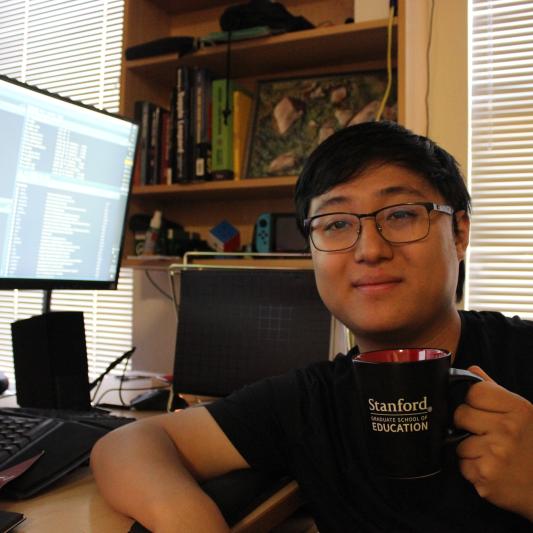
Raymond Zhang
Before he joined the first cohort of the GSE’s new education data science master’s program, Raymond Zhang was an industrial engineer on the front lines at manufacturing plants, improving workflow and developing warehouse management software.
It’s not a typical path for someone interested in education policy. But Zhang, who spent almost as much time coaching high school students in speech and debate as he did at his job in manufacturing, found that working with students could be even more gratifying than solving engineering challenges on the job.
“I loved coaching students in an informal setting, working with them to develop and argue their own thoughts and ideas,” says Zhang, a former high school debate team competitor himself who grew up in a first-generation immigrant household in the Twin Cities area.
A few years ago he joined a research project with the Minnesota Debate Teachers Association, looking into the bias some of his students faced in debate competition – especially Black students, some of whom left the debate program as a result. “We investigated some of the structural issues in the debate community and showed that some kids were disproportionately affected by racism,” he says. “That research provided a starting point for conversations about these experiences, with data to back it up.”
Zhang says his experience has shown him how analytics and technology can motivate changes in learning, but it’s also made him realize some of the gaps in his knowledge. Now at Stanford, he plans to continue developing his skills in gathering and visualizing data to address educational inequities on a larger scale. “Data visualization can help show where inequality lies,” he says. “I hope my research can help more learners reach their potential.”
Photo courtesy of Raymond Zhang



